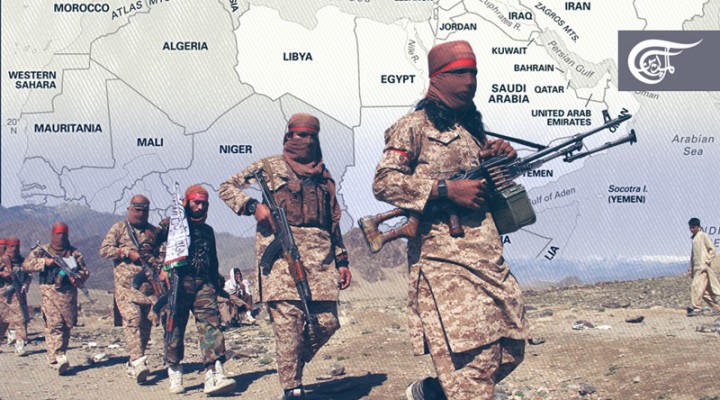Today’s Taliban May Be Truly ‘New’, and the Shift Could Transform the Middle East

Most significantly, rather than having a tunnel vision limited to the narrow territory of Kandahar, the new young Taliban leaders want to play the strategic ‘Great Game’.
There is a subtle breeze blowing; it is too soon to call it ‘a wind’. But a striking change has – and is – occurring. Is it enough? We should be rightly cautious; yet the Taliban that I knew, as it first coalesced – the brainchild of General Hamid Gul of Pakistan’s Intelligence service – is not the Taliban of today. Perhaps we need, too, to avoid being locked into stale narratives. Suhail Shaheen, their spokesman, made this point when he lamented the “propaganda launched against us”, and by which he implied that the world should admit that the Taliban has indeed changed.
Several of these shifts are breathtaking: The Taliban were a narrow Pashtun revanchist movement, wholly Gulliverised by rigid tribal law, and influenced by intolerant Saudi Salafism and Pakistani Islamism.
What do we see today? The Taliban is engaging in extensive diplomacy with Iran. Tehran, it seems, is no longer apostate, no longer an ideological and theological foe. The Taliban now seek to mesh Iran into their wider strategic interests. And more extraordinary, the Afghan Shi’i Hazaras – originally slaughtered and fearfully repressed by the Taliban – are now a component of the Taliban! Then there is now also a ‘Tajik Taliban’, whereas before, the Taliban were a sworn enemy to the northern (mostly Tajik) forces of Ahmad Shah Massoud. Today’s Taliban is no longer a simple instrument of Pashtun hegemony – maybe up to 30% are Tajik, Uzbek, or Hazara. In other words, the kernel of inclusion is already in the soil.
Most significantly, rather than having a tunnel vision limited to the narrow territory of Kandahar, the new young Taliban leaders want to play the strategic ‘Great Game’. Their vision has broadened. They are saying as such, very forcibly to Moscow and Tehran: They will be inclusive; they will try to avoid major bloodshed, and they look to Moscow and Tehran as mediators for a new Afghan dispensation. And there is something more: Saudi and Pakistan formerly controlled the money spigot. Now it is China. For several years now, the Taliban has cultivated China – and China has cultivated the Taliban.
But we must keep our feet on the ground. The Taliban is not autonomous. Both India and Pakistan wield weight in it, and the narco-gangs (the legacy of the CIA’s ill-considered earlier attempts to buy prominent Afghan warlords) may act as spoilers.
But the point here – aside from the caveats above – is, is this enough? Enough for what? Enough to see the US out of the region, that is. There is here, a marked and unusual, constellation of interests. All the principal actors want the US gone from the region.
It is not geo-strategic high science to understand that America’s withdrawal from Iraq and Syria will be contingent on what now happens in Afghanistan. If there is an unholy mess after August 31st, further US withdrawals from the region will become hugely more problematic in terms of domestic US opposition. It is in the interest of the Taliban – as much as of Russia, Iran, and China – that Afghanistan does not now humiliate Biden through a descent into (very possible) bloody civil war.
A tough ‘ask’, but as Pepe Escobar points out, the SCO heavyweights, China and Russia, will be joined on July 14 in Dushanbe, by four Central Asian ‘stans’, plus India and Pakistan (Afghanistan and Iran attend as observers).
Wang Yi and Lavrov likely will tell Ghani’s FM, “in no uncertain terms, that there’s got to be a national reconciliation deal, with no American interference, and that the deal must include the end of the opium-heroin ratline”. (Russia already has pocketed a firm promise from the Taliban that jihadism won’t be allowed to fester. The endgame: loads of productive investment, Afghanistan is incorporated to Belt and Road and – later on – to the Eurasia Economic Union (EAEU).
Why should the Taliban agree? Well, they can be the facilitators of an American wider withdrawal (or, its’ spoiler). But, if they are patient – and agree to wait until US attention has moved on – they can allow Ghani to fall some months later – all in good time. The Taliban might claim then to be the vanguard to a new more sophisticated, more inclusive Sunni Islamism that is aligned with a major Belt and Road infrastructure project.
How did this happen? Professor Rabbani just might be smiling from his grave. It seems the ‘new’ Taliban may have taken the Tajik leader’s political clothing.
 TheAltWorld
TheAltWorld 
0 thoughts on “Today’s Taliban May Be Truly ‘New’, and the Shift Could Transform the Middle East”